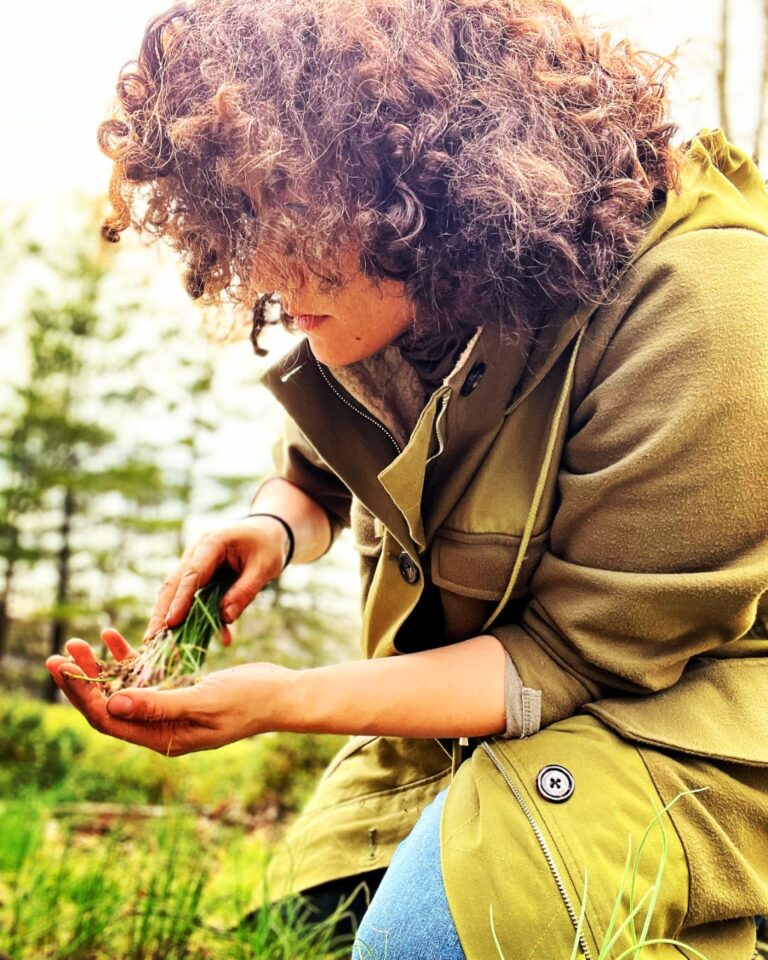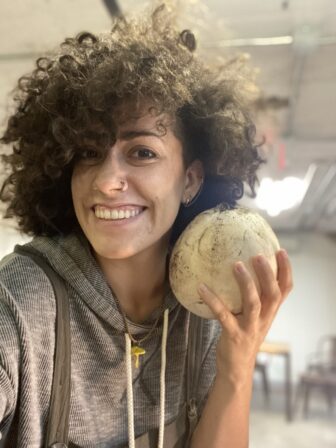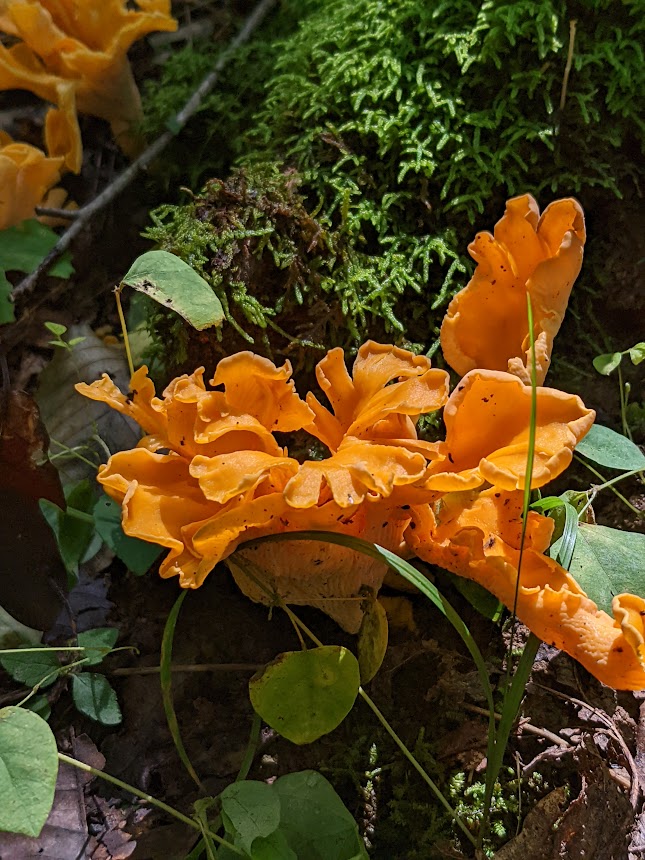
Gabrielle Cerberville
Gabrielle Cerberville forages up to 80% of her diet.By NICOLINE BRADFORD
Capital News Service
LANSING – Step out into your backyard and what do you see? Look beyond the grass, and a delicious new world will open up to you.
From fine dining to TikTok videos, there’s been a renewed interest in foraging and wild food in the past few years.
Gabrielle Cerberville, a forager, TikToker and online educator, credits the recent resurgence to the pandemic that brought most Americans’ lives to a standstill, causing many to turn to the outdoors.
“I think that that experience of slowing down reminded a lot of people of the experience of being out in nature and how good connection feels,” said Cerberville, who lives in Kalamazoo.
“Some people have definitely gotten interested in foraging because they’re afraid of the apocalypse or that the next pandemic is going to wipe out all of humanity and they want to be prepared. But I think most people are just recognizing that it is a joyful experience to get to go outside and interact with nature,” she said.
There are many benefits of foraging, she said.
Wild food is often more nutritious and sustainable than store-bought counterparts. Food in grocery stores is often transported thousands of miles and doused in herbicides, fertilizers and pesticides, Cerberville said. The average apple is sprayed nine times and sits in a warehouse for a year before ending up on grocery shelves.
“We’ve talked about all of these changes to our eating habits that are more sustainable for the earth, like veganism, locavores, and it doesn’t get more local or more energy-efficient than foraging,” Cerberville said.
In addition to supplementing diets, foraging fosters positive relationships with nature and the land people live on.
“If we don’t know what we have, we won’t care for it,” Cerberville said.
The practice is nothing new. Indigenous people have been stewarding and harvesting natural resources for thousands of years, said Linda Black Elk, an ethnobotanist at United Tribes Technical College in Bismarck, North Dakota.
The U.S. Department of Agriculture’s Office of Tribal Relations lists best practices for foraging, Black Elk said.
Foraging can be lots of fun, and it’s great that more people are getting into it, Black Elk said.
“But I think that in the public excitement about foraging, we’ve forgotten that there are people here who have an important relationship with those plants.”
There are potential risks from the increased interest in foraging, such as habitat damage, trespassing and overharvesting. While overharvesting is a problem, Cerberville said the greatest risk comes from people who are not mindful of their surroundings and damage the environment.
“People are sometimes not mindful of fragile environments when they are walking around in a forest looking for high-value forageable items,” Cerberville said.
There is also the potential for self-injury by ingesting poisonous or inedible plants and mushrooms.
People get caught up in the moment, thinking that they’ve found something edible when it’s not, Cerberville said.
“This is the main content of my direct messages on Instagram and TikTok, people saying, ‘Hey, what is this? Is this a chanterelle? It tastes great,’ and I look at it and it’s something poisonous like jack-o’-lantern mushrooms and I’m like, ‘Guys, no, you can’t just eat things because you think that it’s something you’ve heard of,’” Cerberville said.
It’s important to be positive about identification before eating any plant or mushroom.
“I try to identify it three times before I will consume a wild food,” Cerberville said. After a lifetime of foraging, she knows to be careful.
Black Elk stresses the importance of getting off the internet and instead interacting with nature and people who know it best.
“When people learn about the relationship between plants and people and how to nurture that relationship, I believe they walk on the land differently,” Black Elk said. “They’re a lot less likely to exploit and abuse the environment because they have built a relationship.”
To be more sustainable, people need to get creative, said Cerberville, and foraging can be a great option.
“Whether you ever eat a bite of wild food or not, we need to remember that we are all part of nature and we all have a responsibility to it,” Cerberville said. “While you don’t have to eat wild food to cultivate that relationship, it can certainly be helpful.”
“I hope that more people start recognizing how beautiful this world that we live in is. It’s not just a resource, it’s part of our whole experience as members of this planet. I hope that we can all do a better job taking care of it.”
Nicolene Bradford reports for Great Lakes Echo.

Gabrielle Cerberville
Foraging expert Gabrielle Cerberville holds up a giant puffball, one of many edible mushrooms growing in the Great Lakes region.
Nicoline Bradford
Chanterelle mushrooms, sometimes confused with poisonous jack o’ lantern mushrooms, are a popular wild food.